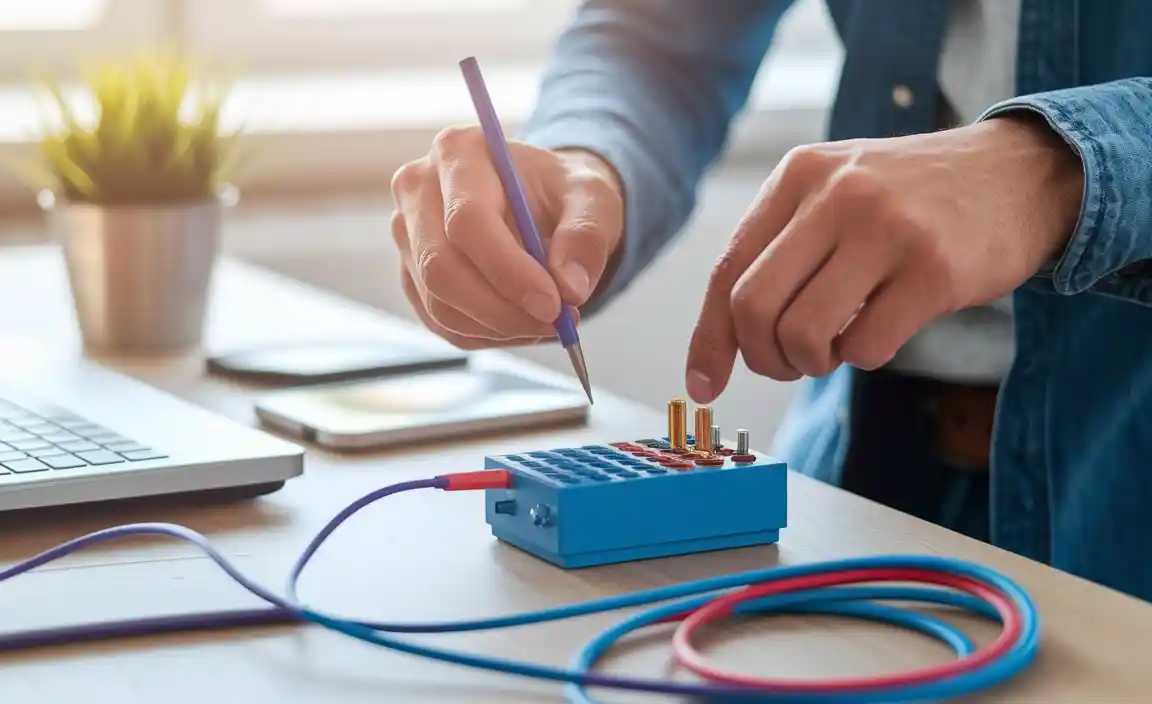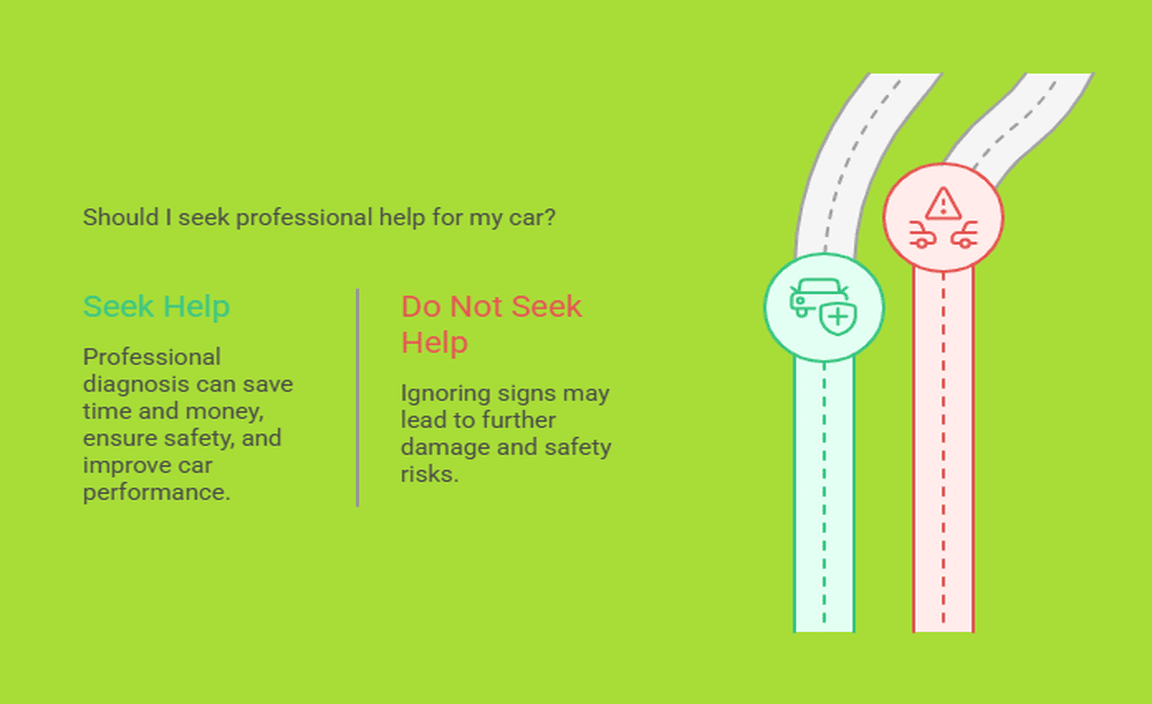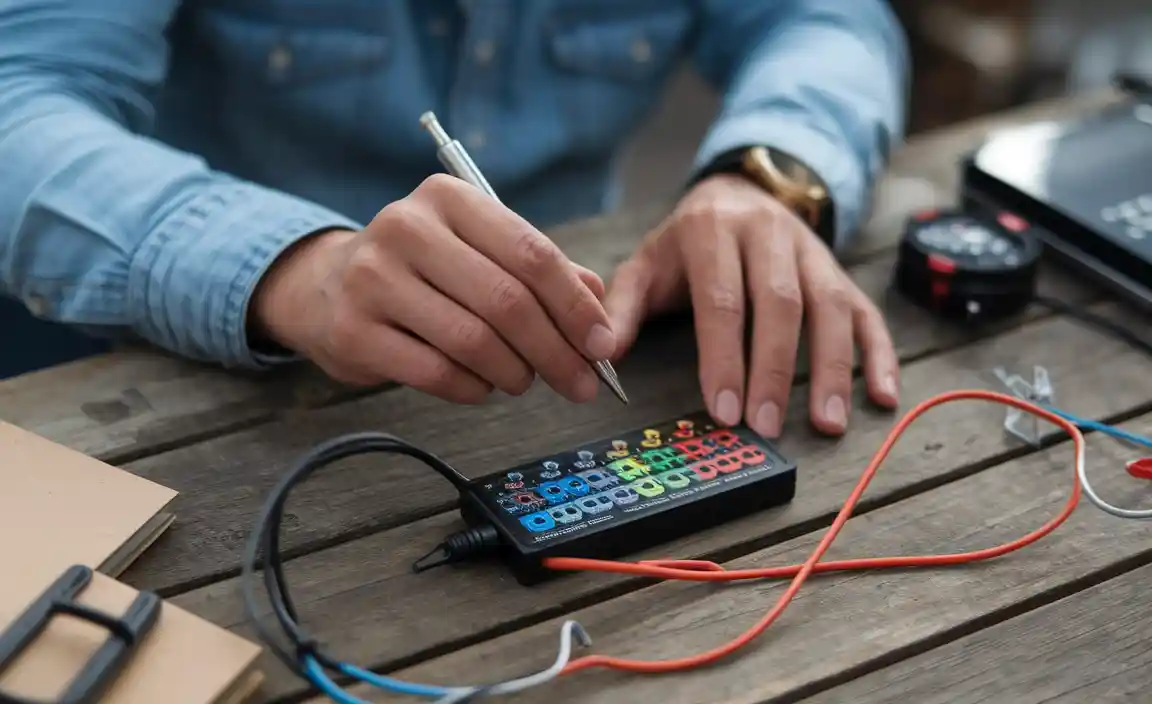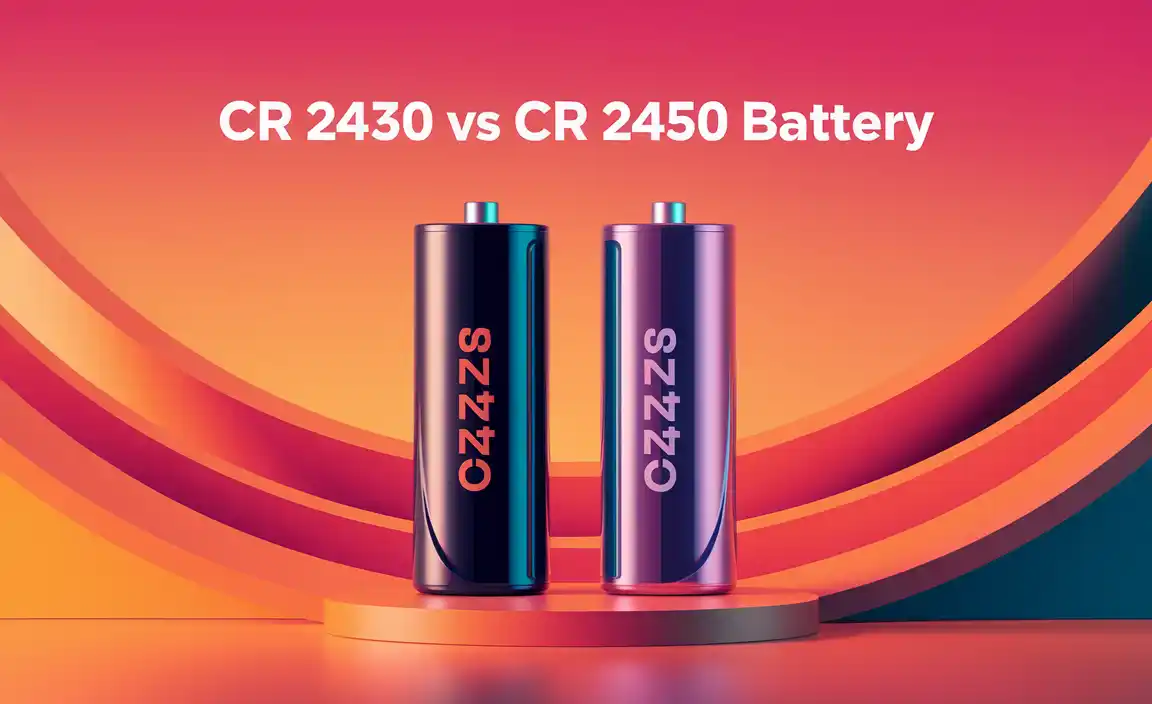Have you ever wondered why your car won’t start? It can be frustrating when the battery is dead. Many people don’t know that some devices or lights can drain your battery even when you’re not driving. This is known as battery draw. It’s a sneaky problem that can leave you stranded.

Imagine you park your car after a long day. You close the doors, feeling confident. But the next morning, you find a dead battery! What happened? Understanding how to check for battery draw can save you from this hassle.
Did you know that even a small device can cause a big issue? A simple light left on can slowly sap your battery’s power. Learning how to detect these unwanted drains is crucial for any car owner. You’ll feel more secure knowing your battery is safe.
In this article, we’ll guide you through the steps. You’ll learn how to check for battery draw quickly and easily. Who knows? You might discover something unexpected lurking in your car that needs fixing!
How To Check For Battery Draw: A Step-By-Step Guide
Checking for battery draw is simple. Start by turning off all electronics in your vehicle. Next, use a multimeter to measure the current flow from the battery. If the reading is higher than 50 milliamps, you may have a draw issue. Remember, some electronics will still use power, like alarms and clocks. Did you know that a small battery drain can kill your battery in just a few days? Finding the problem can save you money on replacements!

Understanding Battery Draw
Definition of battery draw and its implications on vehicle performance. Common symptoms indicating battery draw issues.
Battery draw happens when your vehicle’s battery loses power quickly, often due to an unshut door or a light left on. This can make your car less reliable, kind of like a sleepy bear that refuses to wake up! Common symptoms include dim lights, a slow engine crank, or even a car that won’t start at all.
| Symptoms | Description |
|---|---|
| Poor Lighting | Dim headlights that make you feel like you’re driving in a cave. |
| Slow Engine Crank | Engine sounds like it’s trying to wake up from a nap! |
| No Start | Your car just sits there, giving you the silent treatment. |
Being aware of these signs can save you from the dreaded “I swear, I just charged it!” moment.
Tools Needed for Checking Battery Draw
Essential tools for the process (multimeter, wiring diagrams, etc.). Safety precautions when working with a vehicle’s electrical system.
To check for battery draw, you’ll need some handy tools. A multimeter is essential. This little gadget measures electrical current; like a superhero for your battery! You may also want a wiring diagram. It guides you through your car’s electrical maze, helping prevent you from pulling your hair out. Don’t forget safety gear! Always wear gloves and ensure the car is off. Remember, electric shocks are shocking in the worst way!
| Tool | Purpose |
|---|---|
| Multimeter | Measures current draw |
| Wiring Diagram | Shows electrical connections |
| Safety Gear | Keeps you safe while working |
Preparing Your Vehicle for Testing
Steps to properly isolate the battery. Importance of allowing the vehicle to enter sleep mode.
Before testing for battery draw, it’s key to prepare your vehicle properly. Start by isolating the battery. Disconnect the negative terminal; this step keeps things safe. It’s smart to let your vehicle enter sleep mode. This happens after a few minutes of inactivity. While sleeping, most electronics turn off and use less power. This check will give you accurate results when testing the battery.
How do you isolate the battery in a vehicle?
To isolate the battery:
- Turn off all lights and electronics.
- Open the hood.
- Remove the negative terminal first.
- Replace the terminal after testing.
Steps to Measure Battery Draw
Detailed instructions on using a multimeter to measure draw. How to interpret multimeter readings in relation to normal and excessive draw.
To measure battery draw, you need a multimeter. First, turn the multimeter to the DC Amp setting. Next, disconnect the negative battery cable. Connect one lead of the multimeter to the cable and the other to the battery terminal. This way, you see how much power is being used.
Normal draw is usually under 50 milliamps. If the reading is higher, it means something in the vehicle is draining the battery too much. You can check other devices to find the issue.
What is a normal battery draw?
Normal draw is typically less than 50 milliamps.
Understanding Multimeter Readings:
- 0-50 mA: Normal
- 50-100 mA: Slightly high
- 100+ mA: Excessive draw
Diagnosing Battery Draw Issues
Stepbystep troubleshooting guide. Tips on isolating circuits to identify faulty items.
Finding battery draw issues can feel like detective work. Start by checking the basics. Disconnect your battery and set a multimeter to measure amps. With the circuit off, connect the meter in series. You should see a tiny number, close to zero. If it’s too high, it’s time to investigate further!
Next, you’ll want to isolate circuits to spot the troublemaker. Do this by removing fuses one by one. After each fuse removal, check the meter reading. When the reading drops significantly, you’ve found the guilty party. It’s like playing hide and seek but without the hiding part!
| Circuit | Fuse Number | Reading |
|---|---|---|
| Lights | 1 | 0.02A |
| Radio | 2 | 0.12A |
| AC | 3 | 0.00A |
With this guide, you’ll outsmart those pesky battery draws in no time! Remember, a little patience goes a long way. You got this!

Preventing Battery Draw in the Future
Maintenance tips for longterm battery health. Recommendations for vehicle upgrades to minimize draw.
To keep your car battery healthy, regular care is important. Here are some tips:
- Keep battery terminals clean. Dirt can cause issues.
- Check water levels if the battery uses them.
- Avoid short drives. They don’t fully charge the battery.
- Use a battery maintainer if you park for a long time.
Upgrading some parts can also help:
- Consider LED lights. They use less power.
- Install a smart battery charger.
This can help prevent future battery draw and keep your battery lasting longer.
How can I make my battery last longer?
Maintain your battery regularly and consider installing energy-efficient upgrades. This not only helps with battery draw but also ensures your car runs smoothly for years.
When to Seek Professional Help
Signs that indicate the need for a professional diagnosis. Benefits of consulting with an automotive electrician.
Noticing strange signs with your car? It’s time to get help! Look for these indicators:
- Battery dies quickly.
- Lights stay on even after turning off.
- Weird sounds from under the hood.
Consulting an automotive electrician has many benefits. They can find problems faster and offer proper solutions. This saves time and money in the long run. Plus, your car runs better! Trusting the pros can help keep you safe on the road.

When should I take my car to a professional?
It’s best to seek an expert if you notice battery issues, like rapid draining or flickering lights. These signs can lead to larger problems.
Conclusion
In conclusion, checking for battery draw is essential to keep your vehicle running smoothly. Start by inspecting your battery and fuses for issues. Use a multimeter to measure current draw. Don’t forget to note any unusual power drains. For more tips on battery maintenance, check out reliable websites or guides. Let’s keep our batteries healthy and ready to go!
FAQs
What Tools Are Needed To Measure Battery Draw In A Vehicle Or Electronic Device?
To measure battery draw, you need a tool called a multimeter. A multimeter checks how much electricity is used. First, you turn off the device and take out the battery. Then, you connect the multimeter to the battery wires and see the reading. This tells you how much power the device uses.
How Can You Identify Which Components Are Causing Excessive Battery Draw?
To find out what’s using too much battery, you can check your device’s battery settings. These settings often show which apps or features use the most power. You should also look for any apps running in the background. If something seems unusual, try turning it off or updating it. This way, you can save your battery life!
What Steps Should Be Taken To Isolate The Battery Draw Issue Effectively?
To find out why your battery is draining, first, make sure the car is off. Then, remove one fuse at a time while checking the battery. If the battery stops draining after you take out a fuse, that fuse controls the problem. You can check the device connected to that fuse to see what’s wrong.
What Are Some Common Signs Of Battery Draw In A Car, And How Can They Be Diagnosed?
Some common signs of battery draw in a car are a dead battery, dim lights, or trouble starting the engine. If you notice these, it might mean something is using power when the car is off. To check this, we can use a tool called a multimeter to measure the battery’s power. If the power is low when the car is off, we need to find the part causing the problem.
How Can You Interpret The Readings From A Multimeter When Checking For Battery Draw?
To check battery draw with a multimeter, start by setting the meter to measure current. Connect one part of the multimeter to the battery’s negative side and the other to the wire you removed. When you turn it on, you will see a number on the screen. A small number means little power is used, while a big number means more power. If it’s too high, you might have something draining your battery too much.
Resources:
-
vehicle battery maintenance tips→ https://www.consumerreports.org/cro/car-batteries/buying-guide
-
multimeter safety usage→ https://www.fluke.com/en-us/learn/blog/digital-multimeters/how-to-use-a-multimeter
-
troubleshooting electrical systems→ https://www.popularmechanics.com/cars/how-to/a3145/4286849/
-
battery care for seasonal vehicles→ https://www.familyhandyman.com/project/car-battery-care-tips/









